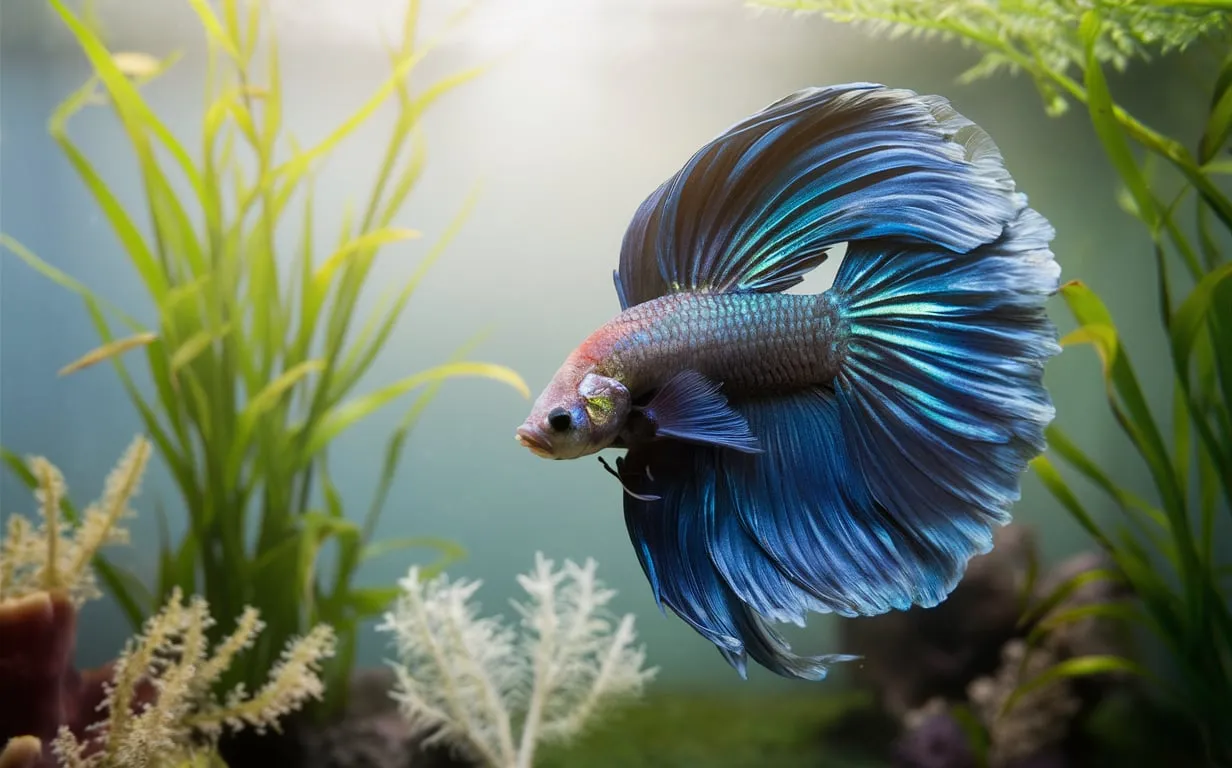Betta Fish, also known as Siamese fighting fish, are a beloved aquarium species renowned for their vibrant colors, unique fine shapes, and captivating personalities. While these diminutive creatures are often associated with smaller sizes, there exists a lesser-known world of betta fish that defy the norm – the biggest betta fish.

Understanding the Largest Biggest Betta Fish Species
Betta fish come in a variety of sizes, with the largest specimens belonging to specific breeds or natural varieties. Some of the most impressive betta fish species known for their impressive size include:
Giant Betta (Betta Smaragdina)
The Giant Betta, also called the Smaragdina Betta, is a natural wild variety that can grow up to 4 inches (10 cm) in length. These bettas are characterized by their broad, rounded bodies and long, flowing fins that can span an impressive 6-8 inches (15-20 cm) in width.
King Betta (Betta Splendens)
While the standard Betta splendens variety typically reaches 2-3 inches (5-7.5 cm) in length, the King Betta is a selective breeding line that can grow up to 4 inches (10 cm) long. These bettas have a robust, muscular build and vibrant, iridescent coloration.
Koi Betta (Betta Splendens)
The Koi Betta, a color variation of the Betta splendens, is another betta variety known for its impressive size. Koi bettas can reach lengths of 3-4 inches (7.5-10 cm) and boast stunning, patterned color combinations reminiscent of the beloved Japanese Koi carp.
Factors Influencing Betta Fish Size
Several factors contribute to the impressive size of these giant betta fish species:
Genetics
Selective breeding plays a crucial role in the development of larger betta fish. Breeders have focused on isolating and enhancing genes that contribute to increased body size and fin length, resulting in the creation of dedicated “giant” betta lines.
Environmental Conditions
The environment in which betta fish are raised can also impact their overall size. Factors such as water quality, temperature, and feeding regime all play a role in the growth and development of these fish.
Age and Maturity
Betta fish continue to grow throughout their lifespan, with the largest specimens often being the oldest. As bettas mature, their bodies and fins can continue to expand, reaching their maximum size after several years of life.
Caring for Giant Betta Fish
Maintaining the health and well-being of giant betta fish requires special considerations:
Tank Size
Larger betta fish require more spacious aquariums to accommodate their size and support their active nature. A minimum tank size of 5 gallons (19 liters) is recommended, with even larger tanks preferred for the biggest specimens.
Water Quality
Strict water quality parameters are essential for giant bettas. Regular partial water changes, efficient filtration, and careful monitoring of water parameters are crucial to prevent stress and disease.
Diet and Feeding
Giant betta fish have increased nutritional needs compared to their smaller counterparts. A varied diet of high-quality betta pellets, flakes, and frozen or freeze-dried foods should be provided to support their growth and development.
What Are The Best Tank Mates For Giant Betta Fish?
Here are some good tank mates for giant betta fish:
- Corydoras catfish – These peaceful bottom-dwelling catfish get along well with bettas. Choose smaller species like the pygmy cory.
- Tetras – Small, peaceful schooling fish like neon tetras or cardinal tetras make suitable tank mates. Avoid fin-nipping tetras.
- Rasboras – Small, peaceful schooling fish like harlequin rasboras are generally compatible with bettas.
- Otocinclus – These tiny algae eaters help keep the tank clean and are typically peaceful with bettas.
- Snails – Nerite snails or mystery snails are good cleanup crew members that won’t bother a betta.
It’s important to avoid aggressive, fast-moving, or long-finned tank mates that may nip at the betta’s fins. Betta-safe invertebrates like shrimp can also work well. Be sure to provide plenty of hiding places and establish the betta’s territory first before adding other fish. Proper tank size, water parameters, and stocking levels are also key for keeping a giant betta happy and healthy with its tank mates.
Conclusion
The world of giant betta fish is a captivating realm that showcases the incredible diversity and potential of these remarkable aquatic creatures. By understanding the unique characteristics and care requirements of the largest betta species, hobbyists can embark on an immersive journey of observing and appreciating these impressive fish. Whether it’s the regal presence of a King Betta or the breathtaking beauty of a Koi Betta, these giants of the betta world are sure to leave a lasting impression on anyone who encounters them.

Related Posts
The Record-Breaking Prices of the Most Expensive Betta Fish
Exploring The Diversity Of Rare Beautiful Betta Fish
Understanding Aquarium Fish Size